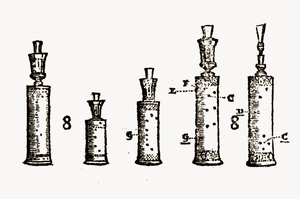Rackett 

The Rackett May Be A Renaissance-Era Double Reed Instrument.
There Area Unit Many Sizes Of Rackett, During A Family Starting From Soprano To Nice Bass. Relative To Their Pitch, Racketts Area Unit Quite Little (The Tenor Rackett Is Barely 4½ Inches Long, However Its Lowest Note Is F, 2 Octaves Below Middle C). This Can Be Achieved Through Its Ingenious
Construction. The Body Consists Of A Picket Chamber Into That 9 Parallel Cylinders Area Unit Trained. These Area Unit Connected Alternately At The Highest And Bottom, Leading To An Extended Wind Passage Inside A Compact Body.
However, Its Uncommon Construction Presents Some Issues For The Player. Thanks To The Weird Arrangement Of The Pipes, The Fingering Pattern Is Somewhat Uncommon.
The Baroque Rackett (Developed By The Urban Center Maker J. C. Denner, 1655–1707) Had A Completely Rationalized less Complicated Fingering Due Partially To The Addition Of Variety Of Tetines, That Area Unit Cannular Metal Extensions Coated By The Center Joint Of The Index Fingers Similarly Because The Pinkies Throughout Enjoying.
The Baroque Rackett (Developed By The Urban Center Maker J. C. Denner, 1655–1707) Had A Completely Rationalized less Complicated Fingering Due Partially To The Addition Of Variety Of Tetines, That Area Unit Cannular Metal Extensions Coated By The Center Joint Of The Index Fingers Similarly Because The Pinkies Throughout Enjoying.
It Can Not Be Tuned By Neutering Its Length. Whereas Some Say Wetness Buildup Might Become A Haul, Condensation Typically Remains Within The Coil Of The Removable Brass Crook, Therefore Being Fairly straight forward To Expel Throughout Pauses. Despite Its Idiosyncrasies, The
Baroque Rackett May Be A Versatile Instrument With A Good Vary Of Notes And Tones. With Associate Degree Acceptable Reed, The Baroque Rackett contains A Similar Chromatic Vary To The Baroque Double Reed (Bbb To G'), And With Its Nimbleness, Will Perform Any Bass-Instrument Repertoire From The Time During Which It Had Been Stylish.
The Ingenuity Of The Renaissance Instrument Maker Was Ne'er Exceeded When The Event Of The Rackett Or Wurstfagott (Sausage Bassoon). The Instrument's Slim Cylindrical Bore Consists Of 9 Parallel Channels Trained In A Very Picket cylinder And Connected Alternately Prime And Bottom. Due To The Inner Convolutions, The Scale Of The Rackett Issurprisingly Little Compared To Its Pitch. The Tenor Rackett Is Simply Regarding Four And Half Inches Tall, Nonetheless Its Lowest Note Is F, 2 Below Middle C1.
The Many-Channeled
Nature Of This Instrument Makes Foruncommon Fingering Patterns. Another Drawback Encountered By The Rackett Player Is That The Removal Of Wet within The Inner Passageways Of The Instrument. Some Racketts Have Small Brass Tubes Extending From The Body For The Player's Fingers Or Thumbs.





No comments:
Post a Comment